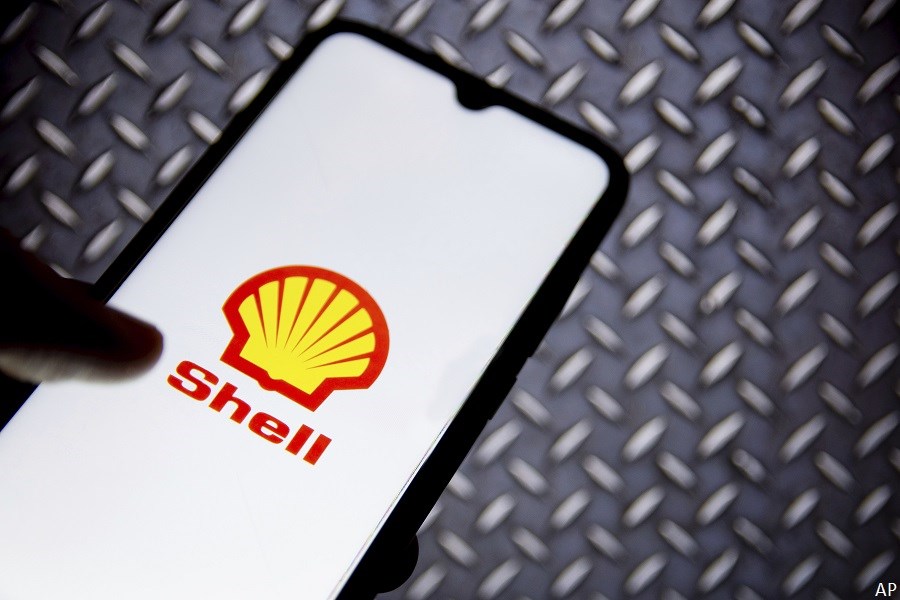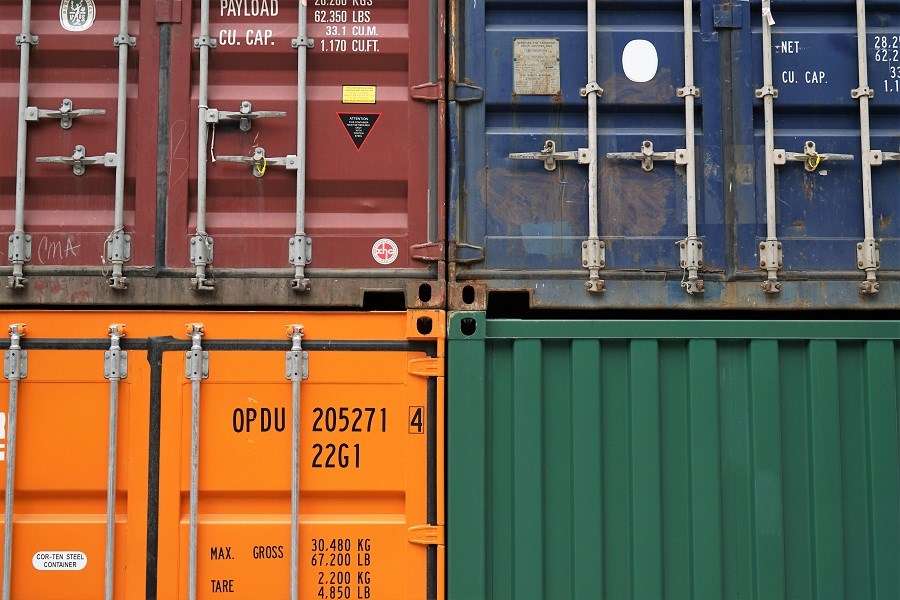
We have downgraded our economic moat rating for Shell (RDS.A)/(RDS.B) to none from narrow. Our forecast for excess returns has become too low while the company’s future uncertainty is too high to award a moat.
The moat downgrade negatively affected our valuation, although this was partially offset by higher oil prices since our last update. The shares still appear cheap, trading more than 20% below our revised fair value estimate, but given a lower yield and less oil exposure, Shell might lag in an oil price rally.
This downgrade might appear to be a quick reversal from our upgrade to a narrow moat rating a few years ago. At the time, integrated oils, including Shell, had made significant headway in reducing operating costs in their existing production base and capital intensity of new projects, so we forecast that they could earn adequate excess returns at our midcycle oil price assumption of US$60 a barrel.
While Shell has managed to maintain those improvements, the uncertainty of excess returns 10 years from now has increased because of the changing composition of the business and potential level of commodity prices during the next 10 years. We are not confident that Shell’s plan to transition to a more renewable and low-carbon business will create competitive advantages, nor that commodity prices will consistently be at levels sufficient to generate excess returns during the next 10 years. As such, Shell fails to meet key criteria for a narrow moat rating. As time passes and Shell demonstrates a high level of competence and execution in these newer areas, or if our view changes on commodity prices, we could revise our moat rating.
Shell’s moat was based on the low-cost position of its oil and gas assets. However, incremental investment is increasingly going to other areas that we think are less likely to earn a moat or whose outlook is uncertain. Investment will center on the latest organizational iteration of the company’s business units into three pillars:
- Growth, which includes marketing and renewable and energy solutions
- Transition, which includes integrated gas and chemicals and products
- Upstream
Initially, upstream will command about 35%-40% of total spending, but that will fall to 25%-30% beyond 2025. The transition pillar will garner 35%-40% of spending initially and 30%-40% beyond 2025. Investment in the growth pillar will increase from 25% currently to 25%-40% beyond 2025 so that it generates roughly 25% of cash flow by then as well.
Recent Oil Crashes Leave Us Wary
Shell has improved the cost position of its upstream segment, including existing production and new projects. During the last five years Shell has reduced unit development costs and operating costs by 51% and 26%, respectively. Operating costs would probably have fallen further were it not for production effects from the coronavirus pandemic in 2020. The company aspires to another 10% reduction in development costs and a 20%-30% reduction in operating costs by 2025. It has also reduced and focused investment on the highest-quality assets. According to Shell, its slate of new projects should be returns-accretive with anticipated average returns of 20%-25%, an average break-even price of US$30 a barrel, and an average payback period of seven years. Based on Rystad data, we estimate Shell’s project queue (sanctioned and unsanctioned) has an average break-even price of US$42 a barrel, well below our assumed midcycle price of US$60 a barrel.
Although this would imply that Shell can safely deliver incremental excess returns, the last decade or so has left us wary; including 2008, oil prices have crashed three times. While they quickly rebounded to US$100 a barrel by 2010, they crashed again in 2014 due to the oversupply from the emergence of light tight oil in the United States. This represented a permanent downward shift in the cost curve and led us to revise our midcycle price to US$60 a barrel. As a result of this volatility, Shell’s cumulative economic profit from 2011 to 2019 was minimal. In 2020, the coronavirus pandemic caused another oil price crash, which we estimate will result in negative cumulative economic profit during the next five years even as we continue to assume that oil prices recover to US$60 a barrel and that the improvement in Shell’s cost structure holds.
Given the oil price volatility of the last decade, the emergence of U.S. light tight oil, which acts as the global marginal supplier that can quickly ramp up or down, and the uncertainty of demand (COVID-19 fallout, work-from-home impact, electric vehicle penetration, and so on), we think it is reasonable to expect similar volatility during the next decade. This does not imply that prices can only fall. To be sure, the fallout from current low prices is also industry underinvestment that could ultimately result in a global shortage and much higher prices than our US$60 assumption. However, the excess returns we forecast for Shell at our midcycle price are too narrow to instill the necessary confidence that they can endure through the cycle in a variety of price environments. This results in our no-moat rating.
Additionally, oil production for Shell has peaked and will fall 1%-2% per year through 2030 through natural decline and divestitures, implying about a 15% total reduction in volumes. This reduces the impact of the upstream segment’s improved cost position and incremental higher returns on total company returns over time. By Shell’s estimates, the upstream segment will only contribute about 30% of cash flow beyond 2025.
Cash Flow From Old Business, Uncertainty From New
Although legacy businesses within Shell’s core competency are likely to generate lower incremental returns than upstream, much of the company’s cash flow will still come from the former. These businesses include integrated gas (primarily liquefied natural gas), chemicals and products (refining), and marketing, which all arguably have stronger long-term demand outlooks than oil. Only the renewables and energy solutions mark new territory and hold greater uncertainty.
Through its integrated gas segment, Shell holds the largest LNG portfolio among peers with 70 million tonnes per annum in LNG sales volumes in 2020, including 33 mtpa of its own production. Although returns have been uneven for this segment the last four years and are weighed down by past high-cost and capital-intensive projects, new projects should be returns-accretive. Shell plans to bring on another 7 mtpa of capacity by the middle of the decade, which should benefit from a decline in LNG technical costs (capital and operating) per million Btu of 40% since 2015 and should deliver returns of 14%-18%. Meanwhile, the long-term outlook for gas demand remains favorable with most third-party forecasters calling for continued demand growth, given emissions savings from the substitution for coal in power generation, the need to supplement intermittent renewable power generation, and expanding applications in shipping and road transport. Finally, prices for Shell’s integrated gas production are primarily tied to global crude benchmarks, resulting in higher prices than typical pipeline gas pricing.
We view Shell’s legacy chemical and oil products business (refining) in a similar light, as the company is investing in what it knows. Returns for both segments have suffered from weak market margins the last several years but should improve in the future. Shell plans to reduce its refining footprint to six core facilities that produce refined products and chemicals, which typically deliver higher returns, given lower costs and greater flexibility among feedstocks and final products. Given the stronger demand outlook for chemicals relative to refined products and lower emissions, the company also plans to reduce fuel production at these sites and increase production of higher-value performance and intermediate chemicals. The elimination of higher-cost and lower-return facilities as well as the mix shift toward chemicals should improve returns in the segment.
As part of its growth plan, Shell plans to invest in its marketing business. Although this is a legacy business with a record of strong returns, we think its outlook is uncertain. Shell’s plan calls for growth in its branded service stations, convenience stores, and electric vehicle charging points and market share growth for its lubricants business to increase earnings 50% by 2025. The plan calls for combining EV charging and improved convenience options to drive traffic through its retail sites in a lower-carbon world. This plan has risk, in our view. Unlike with an internal combustion engine, where drivers have only one option (gas stations) to refuel, EV owners could have multiple options for charging, including home, work, and other retail locations such as shopping malls. It’s unclear why EV owners would need to go to a Shell station to charge except for a long-distance trip. As such, already tenuous switching costs could weaken further. In addition, EV chargers distribute relatively little energy and operate at low utilization rates, likely making them a poor earnings substitute for selling gasoline. An increasing amount of delivery options for groceries might threaten the demand for enhanced offerings at retail locations.
The final element of Shell’s new strategy is focused on renewables and energy solutions. This relatively new business, started in 2016, serves more than 1 million residential and small-business customers primarily in Europe and more than 10,000 commercial and industrial customers. Shell is striving to differentiate its strategy as a service, leveraging its trading experience, to provide clean power to clients looking to decarbonize, as opposed to just investing directly in renewable power generation assets. Although it will do that as well, it does not have a specific target as many peers do. It aims to deliver 10% unleveraged returns and grow to over 15 million customers by 2030 so that this becomes a material business for Shell. The strategy does capitalize on Shell’s brand and experience, and trading likely delivers steady, excess returns through an asset-light model. However, it’s unclear if Shell can truly differentiate itself from peers and other market entrants, where it is adding value, and how it will extract or generate greater economic rents in what is essentially a commodity distribution business. As more players enter the segment, returns are likely to come under pressure. Plans to invest and expand the hydrogen and carbon capture business hold promise and also the potential for a cost advantage, but they are highly uncertain as well. The overall uncertainty of the renewable strategy and industry keeps us from calling it moatworthy at this time.
ESG Risks Present but Have No Effect on Moat
Shell is exposed to several environmental, social, and governance risks, but these have no bearing on our final economic moat rating as most are too long term for moat consideration or are not probable or material enough risk to cause material value destruction. Shell’s primary ESG risk stems from carbon emissions in its operations, use of its products, and emissions, effluents, and waste generated in operations such as oil spills.
The risk from carbon emissions is most likely to materialize through a carbon tax, which increases the price of end products to consumers, reducing demand over time and threatening Shell’s hydrocarbon business. We expect carbon taxes to gain greater adoption over time but think the impact on hydrocarbon demand remains more than a decade away. Furthermore, Shell’s strategic plans call for a gradual move away from hydrocarbons, which is designed to reduce its carbon intensity by 20% in 2030 and 45% in 2035; this should further insulate the company from the impact of a carbon tax.
Oil spills are an ever-present risk for oil companies operating offshore and can be devastating to a company’s value, as BP’s Macondo incident in the Gulf of Mexico shows. While oil companies regularly cause spills, most are immaterial in size and associated fines and cleanup costs are manageable. Large spills such as Macondo are very rare and do not factor into any of our scenario modeling. Most of Shell’s spills occur in onshore Nigeria, where 90% are due to sabotage from the local population. Shell has improved its spill response there but is now looking at potentially selling these assets.
Success in the Low-Carbon Economy
Learn about the companies best positioned to survive and thrive





















